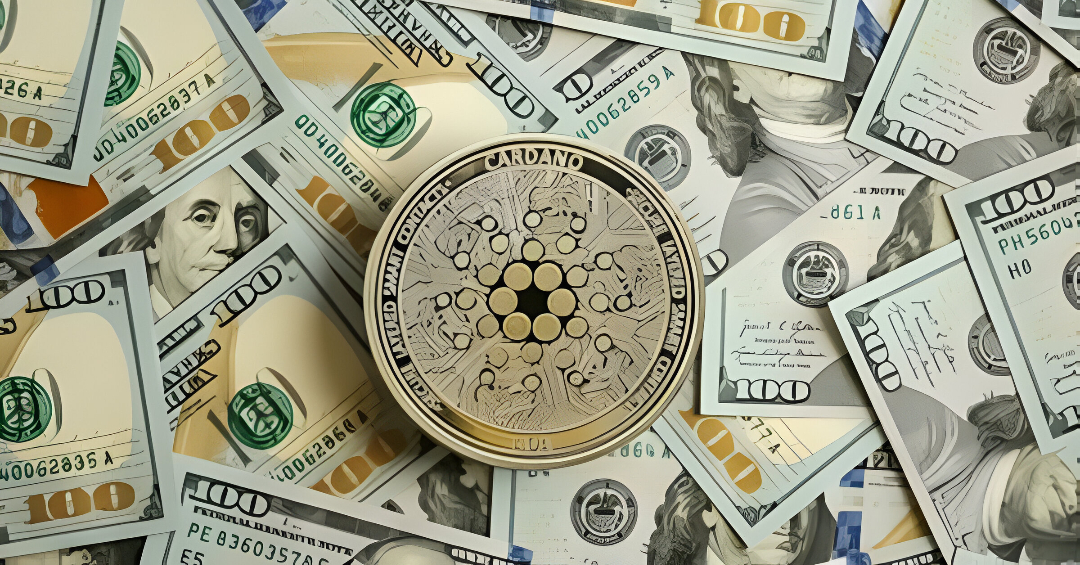As of August 3, 2025, Cardano (ADA), a leading proof-of-stake blockchain platform, continues to draw attention from investors and analysts due to its research-driven approach and growing ecosystem. With a current market price of approximately $0.71 and a market capitalization of over $25 billion, ADA remains among the top 10 cryptocurrencies globally. Price predictions for Cardano vary widely, with analysts forecasting short-term corrections and long-term growth based on technological advancements, market trends, and institutional adoption. This article examines Cardano’s price trajectory, key influencing factors, and expert forecasts for 2025 through 2030.
Understanding Cardano and ADA
Cardano, founded in 2015 by Ethereum co-founder Charles Hoskinson, is a third-generation blockchain designed for scalability, sustainability, and interoperability. Its native token, ADA, named after mathematician Ada Lovelace, facilitates transactions, staking, and governance on the network. Launched in 2017, Cardano has evolved through phases like Shelley (2020) and Alonzo (2021), which introduced staking and smart contract capabilities, respectively. The recent Plomin Hard Fork in Q1 2025 enhanced governance, while upcoming upgrades like Leios aim to improve scalability, according to CoinMarketCap.
Cardano’s unique two-layer architecture separating settlement and computation sets it apart from competitors like Ethereum. With a total supply capped at 45 billion ADA and approximately 36 billion in circulation, the token has shown significant volatility, reaching an all-time high of $3.10 in September 2021. Recent market performance, including a 237% surge in November 2024, has fueled optimism about its future, as reported by Finance Magnates.
Short-Term Price Predictions: August to December 2025
Analysts project a mixed outlook for Cardano in the second half of 2025. Technical indicators suggest a short-term bearish correction following a peak of $0.89 in July 2025. According to Cryptopolitan, ADA is testing support near $0.75, with a potential decline to $0.70 if it fails to reclaim $0.80. However, consolidation above $0.75 could signal a bullish continuation.
For July 2025, CoinGape predicts a price range of $0.57 to $0.90, with an average of $0.73. By December, LongForecast estimates a high of $0.98, driven by seasonal market strength and network developments. CoinCodex projects a potential rise to $1.10 by November, reflecting a 54.26% gain from current levels, fueled by positive market sentiment and easing geopolitical tensions in Q2 2025, as noted by Coinpedia.
Key factors influencing short-term prices include:
- Technical Indicators: The 50-day moving average is declining, indicating short-term bearish sentiment, while the 200-day moving average suggests a strong long-term trend.
- Market Sentiment: The Fear & Greed Index at 55 (Greed) reflects cautious optimism, with 60% green days in the past month, per Changelly.
- Whale Activity: Large holders can significantly impact ADA’s price due to its relatively small market size compared to traditional assets, according to CoinCodex.
Medium-Term Forecast: 2026-2027
Looking ahead to 2026, analysts anticipate Cardano’s price to stabilize and potentially grow as its ecosystem matures. AMBCrypto projects a range of $0.90 to $1.36, with an average of $1.14, driven by increased adoption of decentralized applications (dApps) and layer-2 scaling solutions like Hydra. InvestingHaven suggests a high of $3.12 if ADA breaks key resistance at $1.63, though failure to surpass this level could see prices dip to $1.44.
For 2027, forecasts remain bullish, with AMBCrypto estimating a range of $1.11 to $1.67, averaging $1.39. Institutional adoption and partnerships, particularly in Africa for decentralized identity solutions, could drive growth, as noted by Benzinga. However, competition from Ethereum and Solana, along with regulatory uncertainties, may pose challenges. The Plomin Hard Fork’s governance enhancements and potential ETF approvals, such as Grayscale’s Spot Cardano ETF, are expected to bolster investor confidence, per Flitpay.
Long-Term Projections: 2028-2030
Cardano’s long-term price potential hinges on its ability to scale and attract developers. By 2028, Cryptopolitan predicts ADA could reach $1.94, with an average of $1.61, as the network’s smart contract ecosystem expands. For 2029, projections suggest a peak of $4.14, driven by increased DeFi and NFT activity, according to Cryptopolitan.
By 2030, forecasts vary significantly:
- Coinpedia: Predicts a high of $10.25, assuming sustained market cap growth and widespread adoption.
- InvestingHaven: Projects a more conservative $3.33, contingent on breaking resistance levels in prior years.
- Benzinga: Estimates a range of $0.13 to $0.80, averaging $0.34, citing potential regulatory hurdles.
- CoinCodex: Forecasts a high of $1.76, reflecting optimism about technological advancements.
A $10 price by 2030 would require a market cap of approximately $350 billion, a significant but plausible target if Cardano captures a larger share of the crypto market, per Forbes. However, reaching $100, implying a $3.5 trillion market cap, is considered highly unlikely due to the scale of adoption required.
Factors Influencing ADA’s Price
Several factors will shape Cardano’s price trajectory:
- Technological Advancements: Upgrades like Hydra and Leios could enhance scalability, attracting developers and users, as noted by Flitpay.
- Market Conditions: Bitcoin’s performance and overall crypto market sentiment heavily influence ADA, with correlations observed during the 2024 Bitcoin ETF rally, per Forbes.
- Regulatory Developments: Potential U.S. ETF approvals and favorable crypto policies could boost institutional investment, according to Bloomberg.
- Competition: Cardano faces challenges from Ethereum, Solana, and other layer-1 blockchains, requiring continuous innovation, as highlighted by Changelly.
- Adoption: Partnerships in developing economies and growth in DeFi projects like Indigo and Minswap signal increasing utility, per Forbes.
Risks and Challenges
The cryptocurrency market’s volatility poses significant risks for ADA investors. Regulatory pressures, such as SEC lawsuits or tighter global monetary policies, could dampen demand, as noted by Benzinga. Additionally, Cardano’s slower development pace compared to competitors has drawn criticism, with some investors questioning its ability to deliver on promises, per Changelly.
Technical analysis also indicates potential downside risks. Cryptopolitan notes that a failure to hold above $0.75 could lead to a drop to $0.50 in the short term. Furthermore, macroeconomic factors like interest rate hikes or geopolitical tensions could trigger broader market corrections, impacting ADA’s price.
Social Sentiment and Market Buzz
Posts on X reflect strong community enthusiasm for ADA, with some users predicting prices as high as $12.86 if a Cardano ETF is approved and Bitcoin reaches $250,000, achieving 4.5% market dominance. Others, like Coin Bureau, suggest a potential rally to $3.00, citing bullish market signals. However, these claims are speculative and lack consensus, emphasizing the need for cautious research, as no single source can predict prices with certainty.
Investment Considerations
Investing in Cardano requires careful evaluation due to its volatility. Analysts recommend monitoring technical indicators like RSI and moving averages, alongside fundamental developments such as network upgrades and partnerships. CoinGecko advises tracking trading volume, currently at $958 million daily, to gauge market activity. Investors should also consider diversifying portfolios and consulting financial advisors, as emphasized by CoinCodex, given the unpredictable nature of cryptocurrencies.
Conclusion
As of August 3, 2025, Cardano (ADA) is trading at approximately $0.71, with a market cap of over $25 billion. Short-term predictions for 2025 suggest a price range of $0.50 to $1.85, averaging around $0.95, influenced by technical corrections and network upgrades like the Plomin Hard Fork. Medium-term forecasts for 2026 and 2027 project prices between $0.90 and $3.12, driven by DeFi adoption and institutional interest. Long-term estimates for 2030 vary from $0.80 to $10.25, with a $100 target deemed unlikely due to market cap constraints. Factors like technological advancements, regulatory developments, and competition will shape ADA’s trajectory, while volatility and regulatory risks remain key challenges.
Sources & References:
- CoinMarketCap
- CoinCodex
- Changelly
- Coinpedia
- InvestingHaven
- Benzinga
- TradingView
- Binance
- CoinGecko
- Cryptonews
- Finance Magnates
- Forbes
- CCN
- LiteFinance
- Cryptopolitan
- AMBCrypto
- CoinGape
- Token Metrics
- Flitpay
Author
-

Marcus Hale is a finance professional turned content creator who specializes in personal finance, stock market analysis, crypto trends, and smart investing strategies. Known for simplifying complex financial concepts, Marcus helps readers make confident money decisions. Whether you’re budgeting, investing, or tracking global markets, Marcus delivers timely advice with clarity and authority.







